Ed Gorman's Blog, page 136
February 8, 2013
David Goodis' The Burglar by Fred Blosser
by Fred Blosser
 [image error]
[image error]
Ed, with David Goodis’ THE BURGLAR back in print from the Library of America, and the first (1957) movie version with Dan Duryea available again on DVD, maybe the Blog crew would indulge me in revisiting some thoughts that I posted here in 2007 about the second film adaptation. That was Henri Verneuil’s 1971 LE CASSE, an international but mostly French production released in the U.S. by Columbia Pictures in 1972 as THE BURGLARS.
I got a minor fact wrong the first time around, and more seriously, I discussed Verneuil’s movie in a vacuum, not having read Goodis’ novel at the time. Thanks for the chance to correct and amplify my earlier comments.
Here’s what I said in 2007:
“I wonder how many besides me remember THE BURGLARS, from 1971, based on David Goodis’ THE BURGLAR. I found it recently on a DVD from Alfa Digital, and on watching it again for the first time in 30+ years, I found myself liking it a lot more than I remember liking it when I saw it in the theater in 1972, when it had a brief U.S. release.
“Then: I think I was disappointed in large part because I was expecting a violent noir-ish crime movie along the lines of other late ‘60s and early ‘70s films like POINT BLANK, GET CARTER, THE FRENCH CONNECTION, and DIRTY HARRY. I didn’t find much noir in THE BURGLARS, which was mounted as one of those shiny, big-name international productions that enjoyed a vogue at the time. (In this case, Jean-Paul Belmondo and director Henri Verneuil for the French market, Ennio Morricone’s jazzy soundtrack for the Italian theaters, Dyan Cannon and Omar Sharif for U.S. marquees, and a solid supporting cast of Euro-movie types like Robert Hossein and Jess -- not to be confused with Jessica -- Hahn.) I was also familiar with Verneuil's 1969 THE SICILIAN CLAN, which was almost as glitzy but nevertheless more noir-ish and more tightly knit.
“Now: I would give Verneuil more noir credit than I did at the time. I haven’t read Goodis’ novel or seen the earlier movie version from the late ‘50s, but from other reviews, I infer that Goodis was just a point of departure for Verneuil, not a template for mood or style. Still, Omar Sharif’s sleazy police detective, who discovers that Belmondo and his gang have burglared a fortune in emeralds from a millionaire’s villa, and decides to grab the stolen goods for himself rather than arrest the culprits, is a dependable noir type. And Sharif, wearing a cool white fedora and white trench coat, turns in a pitch-perfect performance, just the right mix of charm and nastiness.
“And three decades on, I seem to find the movie’s meandering style – constructed around the lengthy burglary that opens the movie, followed over the course of the story by four big action set pieces – more tolerable than I did then. Maybe because so many of today’s action flicks are even more meandering, to the point of frustration, as the viewer checks his watch at the two-hour point, and realizes that the film has at least another half hour to run – PIRATES OF THE CARIBBEAN and LORD OF THE RINGS, anyone? At least Verneuil kept his running time under two hours.
“Dyan Cannon, playing a magazine centerfold whom Belmondo picks up in a swank bar with a mellow Morricone lounge tune playing in the background, seems to randomly move in and out of the storyline – but pay attention, because as it turns out, her character serves a venerable noir function as well, including the classic bit (probably now verboten for fear of offending audiences) where the leading lady gets slapped around by the leading man. Verneuil compounds the sin by giving the scene a would-be comic edge. Cannon has an electronic "clapper" in her apartment (probably cutting edge high-tech in those days). Slap, the lights in the apartment go out. Slap, on again. Slap, off again.
“Belmondo apparently did his own stunts in scenes where he eludes Sharif by jumping onto the sides of buses in moving traffic, sprints across the roofs of cars when the traffic stalls, and gets ejected over a hillside by a dump truck. I’m sure the stunts were set up with great care to minimize any risk of the star getting hurt, but still, it’s nice to see the old movie style where the stunts interact with real props, not with a phony CGI green screen, and the action hero’s movements are limited by the physical laws of the real world. I wish the Alfa Digital DVD were better than it is (it appears to have been struck from an aging print with less than optimal DVD technology), but it’s the only one on the market.”
Flip the calendar to 2013. I goofed in saying that Jess Hahn, an American actor who played character roles in many European crime movies and westerns in the 1960s and ‘70s, appeared in THE BURGLARS. It was actually Italian actor Renato Salvatori. Maybe I was thinking of Hahn’s similar role in another Nixon-era crime film based on a 1950s paperback novel, Hubert Cornfield’s THE NIGHT OF THE FOLLOWING DAY.
My comment about today’s overlong, overproduced movies still stands: Christopher Nolan’s excruciating Batman productions are a case in point.
Now that I’ve read THE BURGLAR, I see that I was correct in surmising that Verneuil used the novel as a jumping-off point, not a model. More precisely, I might say that the book and the film are mirror reversals of each other. Goodis’ glum protagonist, Nat Harbin, is stressed from holding his increasingly argumentative gang together and protecting his ward, a wan little orphan named Gladden who loves him. (The girl’s name may be the cleverest touch in the novel: there is little in Harbin’s and Gladden’s doomed romance to make either of them glad.) In Paul Wendkos’ 1957 film, scripted by Goodis, Dan Duryea nails Harbin’s hangdog desperation dead center. Belmondo’s character, named Azad, is tailored to fit the French actor’s classic on-screen personality: outgoing and ebullient.
In the book, the corrupt cop Charley circles Harbin at a distance. Sharif’s counterpart, Zacharias, hangs onto Azad like a lamprey, giving Belmondo and Sharif the opportunity to play off shrewdly against each other. Verneuil keeps the subplot in which a mysterious woman who seduces the protagonist turns out to be something other than she appears, but he jettisons another subplot involving Gladden and Charley. At the risk of revealing spoilers, the ending of Goodis’ novel could hardly be bleaker. Verneuil’s version comes to a relatively happy resolution following the disposal of Zacharias, which occurs in a way that recalls the famous final scene in Carl Dreyer’s VAMPYR.
Goodis fans may feel let down by THE BURGLARS in the same way that Ross Macdonald fans may feel pissed off by the 1986 movie version of BLUE CITY, or Donald Hamilton fans by the old Matt Helm films. The BLUE CITY movie is hardly defensible on any basis, but Verneuil’s product is fun if you approach it as a cultural artifact of the early ‘70s. From that perspective, we can appreciate Belmondo’s leather jacket and cocky personality, Sharif’s snappy white fedora and gourmet affectations, Cannon’s sunny blondeness, and Remy Julienne’s car chases as keys for understanding how filmmakers perceived and attempted to play to filmgoers’ expectations some 40 years ago.
It looks like a couple of different DVD editions of THE BURGLARS can be found on the web, with a little legwork; it’s unclear whether the Alfa Digital print is still on the market. As Sony continues to release older titles from the Columbia vaults in Print-on-Demand editions, maybe a legitimate, well remastered version will finally surface someday. Morricone’s soundtrack is available on CD, with nice liner reproductions of cast photos and posters, as GLI SCASSINATORI, the movie’s Italian title.
# # # #
Published on February 08, 2013 15:09
February 7, 2013
Ed here: There's an infamous Gerald Kersh story titled "T...

Ed here: There's an infamous Gerald Kersh story titled "The Queen of Pig Island." It's infamous because its scalding humor and perverse conclusion leave lesions on your brain.
I thought of the Kersh story as I read the brilliant stories (yes, brilliant) in John Kenyon's first collection THE FRST CUT. In some respects the book is a running commentary on neo-noir and neo-hardboiled. He ransacks many of the now-traditional tropes to create a voice and style all his own. And to bring a sad humanity to his stories that so much crime fiction lacks.
The style is as spare and clean and magical as poetry. A number of these pieces are so rich in detail they are virtually mini-novellas.
I like the description Amazon uses:
"James gets a job delivering organs for transplant, but needs to make a little detour first. Lenny's appreciation for the comedy of Steve Martin gets him out of a tight jam. Tommy has some secrets buried in the back yard, and they don't seem to want to stay there. Rick's reunion with an old college roommate ends in gunplay. In these stories, John Kenyon looks at the people who are usually content to hide under rocks. But when you pull the rock away for a look, that's when the trouble begins. You won't find buckets of blood here, nor twisted hillbillies with arsenals that would give a militiaman pause. No, what we have here is more dangerous, more sinister: stories filled with the kind of people we encounter every day. They live check to check and the last one came two weeks ago. They have been under the thumb of the man for a long time, and just decided they've had enough. They seek redemption when the world isn't ready to provide it."
As I said of Kersh, some of these stories leave lesions on your brain because in addition to the writing, they are just damned amazing, shocking, stunning tales. There's a page and a half piece about a man in poverty that is as powerful as Hemingway's six word story about unused baby shoes.
You can get this on Kindle for $1.99. You'd be crazy not to buy it right now. I gaurantee you've never read anything like it.
Published on February 07, 2013 14:09
February 6, 2013
TITAN BOOKS PRESENTS THE GREAT HELEN MACINNES
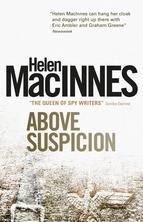
Above Suspicion
Paperback
SEE THE ARTICLE BELOW THE BOOKS

Agent in Place
Paperback

Assignment in Brittany
Paperback
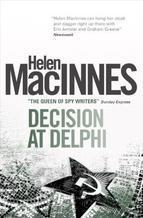
Decision at Delphi
Paperback
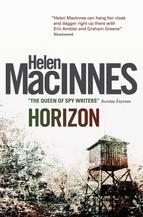
Horizon
Paperback

Message from Malaga
Paperback
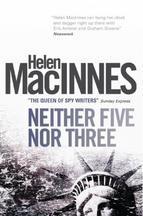
Neither Five Nor Three
Paperback
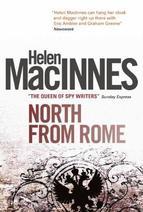
North From Rome
Paperback

Pray for a Brave Heart
Paperback
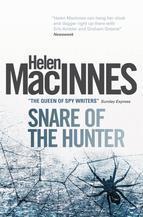
Snare of the Hunter
Paperback
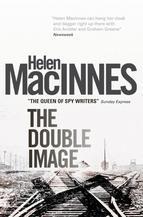
The Double Image
Paperback
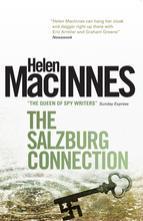
The Salzburg Connection
Paperback

The Venetian Affair
Paperback

While We Still Live
Paperback
1 of 1
The following is an excerpt from "A Woman Reading" from The Holloway Library official
Working at a library, as you might imagine, I brought home stacks of books everyday. My collection of borrowed books was unrealistically high and my husband was concerned that I might read myself blind. (Not to worry, my eyes are fine.) I put North From Rome on the top of the stack and began reading it that night. For me, the novel turned out to be one of those books that you stay up until 3 am to finish. It was just that good.The next day I returned to the library and checked out every Helen MacInnes book they had (And you will find that almost every library has most of her titles. They might be collecting dust in a basement somewhere but they have them.) and proceeded to read them throughout the week. I found her books to be addictive. But then again, someone who was known as the “Queen of Spy Writers” must have known what she was doing, d’accord? He offered cigarettes for ladies and had a strong sense of honor. A sort of James Bond without the ego or instinct for killing, although her characters always knew how to handle a gun when necessary. He typically was a writer, working in publishing–maybe a lawyer going abroad for business, and then he stumbled into international intrigue and danger. I mean, it was always an accident that propelled the hero into the plot.And there was romance with a pretty girl and bad guys with a political agenda. MacInnes’ writing is almost Hemingway-ish in its understatement but always very witty. And the suspense is of the on-the-edge-of-your-seat variety. Many call her the precursor to Robert Ludlum (That’s the guy who wrote the books the Jason Bourne movies were based on–you did know there were books first, right?). Even though her stories, for the most part are set during World War II and the Cold War, I found her stories to be relevant and somewhat timeless. I mean, there will always be political unrest and countries using espionage in the interest of national security, yes?What really appealed to me in her stories were the international settings: Rome, Venice, Athens…all places I love or imagine I would like to go. Often or not, the characters of her novels were racing from one fabulous European destination to the next. After reading her novel, you felt as if you had visited the cities that the story took place in, I mean literally walked the streets and knew your way around. And if you found yourself on the way to the areas written about, you had a genuine list of tourist spots, restaurants and cafes to visit.for the rest go here: http://awomanreading.wordpress.com/20...
Published on February 06, 2013 14:11
February 5, 2013
My feelings exactly on the Super Bowl Half Time Show
From Ken Levine:
It’s time to step back. Time to think of new approaches. Maybe a new pace. Less might be more. Same with the halftime show, by the way. Instead of an extravaganza that only Wayne Newton could love, how about putting Adele at mid-field, give her a mic, and let her blow away the world by just singing? You’ll have a better show and you won’t blow out the electricity in three states.
It’s time to step back. Time to think of new approaches. Maybe a new pace. Less might be more. Same with the halftime show, by the way. Instead of an extravaganza that only Wayne Newton could love, how about putting Adele at mid-field, give her a mic, and let her blow away the world by just singing? You’ll have a better show and you won’t blow out the electricity in three states.
Published on February 05, 2013 13:42
NBC Picks Up 'Ironside' Reboot Pilot

Published: February 04, 2013 @ 7:56 pmEd here: My 94 year old Mom loves the old b&w Perry Masons so I bought her all the seasons available. She never gets tired if watching them in her assisted living apartment. Then I made the mistake of buying a few seasons of Ironside. I watched two and a half episodes and stopped. Is it just me or is Ironside the single most boring crime series ever produced?
NBC has decided to roll with an effort to bring the classic series "Ironside" back to the small screen.
The network has picked up a pilot for an "Ironside" revamp, with "The Sopranos" story editor Michael Caleo writing and executive producing the project.Much like the original, the new pilot will center around a tough but acerbic police detective who's forced into a wheelchair after a shooting, but is hardly limited by his disability as he pushes and prods his hand-picked team to solve the most difficult cases in the city. The project, which comes from Universal Television, Davis Entertainment and Yellow Brick Road, will also be executive produced by David Semel ("American Horror Story: Asylum"), Yellow Brick Road's Teri Weinberg, and Davis Entertainment's John Davis and Jon Fox.Also read: NBC Orders Pilot From "Rescue Me" Co-CreatorThe original "Ironside," which starred Raymond Burr as wheelchair-bound chief of detectives Robert T. Ironside, ran on NBC from 1967 to 1975. (It also inspired a pretty boss song, "Cazzo di Ferro," by pop-punk band The Lemonheads, below.)
Published on February 05, 2013 11:41
February 4, 2013
Spree by Max Allan Collins

Get all the Quarrys in handsome new editions with introductions by Max Collins. Now 20% at Perfect Crime Books http://www.perfectcrimebooks.com/
This is my favorite of Collins' Nolan series. Formerly a man associated with the mob, though reluctantly, now trying to go straight with a restaurant in the Quad Cities on the Mississippi River. Things are going along nicely until Cole Comfort and his dim son catch up with him. They hold him resposible for some of their serious bad luck.
To fully appreciate Cole you have reach back to William Falkner and Erskine Caldwell. Outwardly he's something of a haydseed, right down to his flannel shirts and bib overalls. But he's hard to peg, as one of his early victims learns. She wonders about a man who says "ain't" then a few sentences later uses the word "conduit." Go figure.
Cole Comfort is one of the great bad guys of hardboiled fiction. A man who has used his family to help him run every kind of scam, con and robbery you see on those WANTED posters in the post office. And not a sentimentalist. Oh, no. If he has to lose a loved one in the process of getting what he wants so be it.
Son Lyle is a twenty-three year old pretty boy who is in effect his father's robot. He doesn't want to kill anybody but just as the book opens he's about to off his sixth victim. He has flashes of remorse but they don't last longer than any of his other thoughts, around thirty seconds.
In broadstroke the story is a confrontation between Nolan and the Comforts. They are nasty sumbitches and make some of the mob men who tried to kill Nolan years earlier seem like nice guys.
What makes the book memorable is its successful balance of hard boiled suspense and wit. No easy task. Nolan is just detached enough to function as a mercenary when he goes after the Comforts for kidnapping his woman (Collins partially modeled him after Lee Van Cleef) but believable enough to really care about her. Collins' description of their relationship is winning and unique.
But the Comforts take the book. Loathsome as they are--Cole is a combination of Bubba and Richard Speck--you can't look away no matter how grotesque they become. Most of the Comfort scenes have me smiling all the way through. Several have me laughing out loud.
Spree is pure twisty pleasure and a major book in Collins' career.
posted by Ed Gorman @ 5:33 P
Published on February 04, 2013 14:29
February 3, 2013
The case of the celibate detectives--Holmes and Poirot
The case of the celibate detectivesSherlock Holmes and Hercule Poirot were defiantly asexual. What did Sir Doyle and Agatha Christie have against sex?BY CHRISTOPHER WALLACE SALON MAGAZINE
12 46 0 more TOPICS: SHERLOCK HOLMES, BOOKS, MYSTERIES, PROCEDURALS, POIROT, AGATHA CHRISTIE, CELIBACY,FEMME FATALES, SEX, ASEXUAL, ENTERTAINMENT NEWS
Sherlock Holmes was a virgin. Hercule Poirot was a prude. And, I don’t know Miss Marple all that well, but she was hardly Aphrodite. One thing is for sure: The great private detectives of the English whodunit weren’t doing it.Sir Arthur Conan Doyle’s Victorian-era superman, with his Freudian appetite for cocaine, did not otherwise abstain according to his epoch’s mores, but lust was as foreign to Holmes as frivolity. His acute powers of deduction left him cold and indifferent to the powers of seduction. “He” famously “never spoke of the softer passions, save with a gibe and a sneer,” wrote his dutifully Boswellian Watson. “They were admirable things for the observer — excellent for drawing the veil from men’s motives and actions. But for the trained reasoner to admit such intrusions into his own delicate and finely adjusted temperament was to introduce a distracting factor which might throw a doubt upon all his mental results.” This a-romantic remove set him apart, both from the corruptible creatures he studied as if through a microscope, and from the community of literary characters at large. Aside from perhaps Tom Jones, Holmes was our first and — along with Poirot’s contemporaries in the pages of Virginia Woolf and E.M. Forester — our most significant asexual character in fiction.It is a tricky thing, making of an abstemious protagonist a vivid personality. It is usually in the so-called base passions, the Tolstoyian temperaments, that a character reveals himself. So it is rather a unique accomplishment that Doyle’s and Agatha Christie’s famously rigid, um, dicks read as anything but robotic. (It is interesting to note that neither Christie nor Doyle was particularly celibate or anhedonic, as far as we can tell: She wrote out-and-out romance novels under a pen name, and they each married more than once and had children.)But in a procedural, a hound with scent only for the case is of course a compelling plot engine. There are no softer passions to distract, no veil to be drawn on their motives. Raymond Chandler and Dashiell Hammett’s noir creations hardly ever sleep and, confusingly, never seem to take the money they work for. But Holmes and Poirot never even fall for the femme fatale, never get duped by the dame.
for the rest go here:
http://www.salon.com/2013/02/03/the_c...
Published on February 03, 2013 08:24
February 2, 2013
Michael Winner Talks Charles Bronson
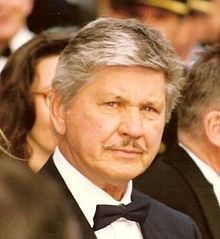
Ed here:Cinema Retro provides a link to the Daily Mail's excerpts of (the late) Producer Michael Winner's take on various stars he worked with. For the entire piece you can get the link herehttp://www.cinemaretro.com/index.php?... The only disappointment is Lauren Bacall. Not a nice woman at all. An understatement.
Charles BronsonCharles Bronson, who starred in my Death Wish films, had been brought up among the poorest of the poor in a mining town in Pennsylvania. He had a violent streak, and could, I believe, easily have turned to a life of crime.His reaction when he first heard the plot of Death Wish was one I won't forget. 'It's about a man whose wife and daughter are mugged, and he goes out and shoots muggers,' I'd told him. 'I'd like to do that,' said Charles. 'What, the film?' I said.'No. Shoot muggers,' he replied.In other respects, though, he wasn't at all like his tough-guy image. For a start, he shaved eight years off his age - which made him 60 rather than 52 when we did our first film together in 1971.When we booked Charles into a hotel, he'd say he didn't want to be above the first floor - 'because if there's a fire, I won't be able to get out'. And he hated it when members of the public wanted to shake his hand.'I might catch something from them,' he said.While making the Death Wish movies, I had lunch with him every day and he always forgot his glasses - so he'd ask me to read him the menu. This was rather sweet. On set, he was supposed to be a great sharpshooter, picking people off buildings 100 miles away - yet he couldn't even read a menu.If you kept him any longer than 6.30pm on set, he'd become extremely irritated. When I begged him to stay on to complete a scene, he'd say: 'Michael, it took me 40 years to become a star, those are the terms in my contract and I'm afraid I'm going to stick to them.'The truth is he was terribly conscious of the fact that he'd come to stardom late. Never once, for instance, did he agree to do a film with a star as his leading lady. He was insecure and simply didn't want the competition.Every day, he exercised and dieted carefully. And, shortly before the first Death Wish, he had plastic surgery.Over time, he had a great deal more of it. Sadly, that wonderfully lined face became increasingly bland.
Read more: http://www.dailymail.co.uk/femail/article-2269338/Sophia-topless-Joans-hair-raising-wig--Connery-kicked-door-Deliciously-indiscreet-stories-Britains-best-loved-dropper.html#ixzz2JmQv5QLr
Follow us: @MailOnline on Twitter | DailyMail on Facebook
Published on February 02, 2013 13:46
February 1, 2013
SCHINDLER’S FISTS Liam Neeson as action hero byJames Wolcott
Wham! Bam! Thank You, Liam!
Since Taken, Liam Neeson has morphed from much-admired actor to pulp-movie badass. As his body count rises, Neeson’s hulking presence and anchoring calm make him the surprise successor to another vengeful giant, John Wayne.By James WolcottPhoto illustration by DarrowCOMMENT (0)EMAIL
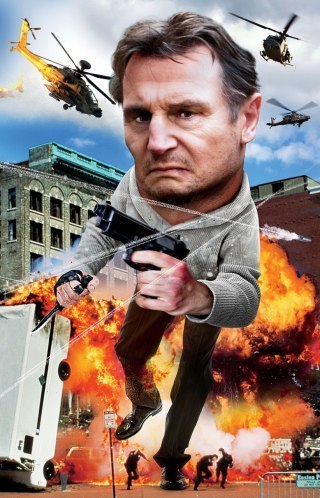
PHOTOGRAPH BY DOUG BERRY/GETTY IMAGES (GUN AND LEFT HAND), ED DARACK/GETTY IMAGES (HELICOPTERS, RIGHT), FROM FOTODESIGN HOLZHAUSER/GETTY IMAGES (LOWER BODY), BY JACK GUEZ/AFP/GETTY IMAGES (HELICOPTER, LEFT), FROM MGM/PHOTOFEST (BACKGROUND AND EXPLOSION), © OPEN ROAD FILMS/EVERETT COLLECTION (RIGHT HAND AND KNIFE AND SWEATER), FROM TWENTIETH CENTURY FOX FILM CORPORATION/PHOTOFEST (HEAD).SCHINDLER’S FISTS Liam Neeson comes to the rescue, again and again.TFROM VANITY FAIRTo look heroic on-screen, height is a definite plus. A tall silhouette on the horizon, a hulking presence in the doorway, a set of broad shoulders capable of carrying an entire movie across the raging rapids—stature is a statement unto itself that big things are at stake. Hollywood can jack up the illusion of looming presence for a vertically impaired star—add lifts to his shoes, stand him on boxes, shoot from low angles, surround him with hobbits and garden gnomes—but an action stud who fills the camera frame from top to bottom unassisted is a proclamation of physical prowess: a force of nature. Let’s climb the ladder and picture: Lee Marvin in his silver-gray sharkskin suit, all six feet two of him, bashing everything in view to retrieve his ill-gotten loot in Point Blank. Daniel Day-Lewis, also six feet two, bursting from the forest in The Last of the Mohicans and bearing the fate of the Republic on his bony frame in Lincoln. Gary Cooper, six feet three, taking that fateful stroll as the noble marshal of that chicken town in High Noon. And the man who won the American West and World War II while walking pigeon-toed across hot sand, John Wayne, a shambling, meaty monument of a man at six feet four. The unlikely heir to the Duke’s royal shitkickers today is Liam Neeson, who, after a long, upward-trending career as a Much-Admired Actor, suddenly quantum-leapt into a global authority figure in the art of cinematic smackdown, twisting bad guys’ heads as if they were bottle caps. He, too, is six feet four, a mighty tree in the autumn of life.A former forklift operator in his native Ireland, Neeson first came to the swooning attention of swinging Americans as the I.R.A. revolutionary shopping for Stinger missiles in Season Three ofMiami Vice—a terrorist, aye, but with a smooth-cheeked, wistful quality that set him apart from the usual smarmballs taunting Crockett and Tubbs with their oily imprecations. On-screen, even in his stalwart roles in Excalibur, Rob Roy, Michael Collins, Ethan Frome, and Schindler’s List(what a roll call!), Neeson casts the cloud of a poetic brooder, an introspective slab of decency who has to be roused into action, handed the baton of history
for the rest go here: http://www.vanityfair.com/hollywood/2...
Published on February 01, 2013 13:23
January 31, 2013
Mystery Writer Alert-Death by cunnilingus
Death by cunnilingusA Brazilian woman tried to kill her husband by putting poison in her vagina, but her plan backfired pretty quicklyBY KATIE MCDONOUGH 35 80 2 more TOPICS: CRIME, MURDER, POISON, SEX, MARRIAGE, LIFE NEWS, NEWS(Credit: Rich Koele via Shutterstock/Salon)Look, I do not relish making light of attempted murder. But sometimes you just need to write about a really crazy attempted murder.A Brazilian woman has been accused of trying to kill her husband by putting poison in her vagina and asking him to have oral sex with her.The intended victim — identified only as a 43-year-old man from Sao de Jose Rio Preto – knew something was going on when he noticed an unfamiliar odor coming from his wife’s freshly poisoned nether region.But here’s the thing about vaginas, as this woman soon learned: They are very porous.Realizing that his wife was probably absorbing a majority of the poison she had intended tokill him with, he brought her to the hospital and saved her life. This guy! He is totally down to perform oral sex 24/7 and will generously rush you to the emergency room after you try to kill him. And they say chivalry is dead!But he is nobody’s fool: Sources reveal the man intends to sue his wife for attempted murder.Katie McDonough is an assistant editor for Salon, focusing on lifestyle. Follow her on Twitter @kmcdonovgh or email her at kmcdonough@salon.com.MORE KATIE MCDONOUGH.
Published on January 31, 2013 15:19
Ed Gorman's Blog
- Ed Gorman's profile
- 118 followers
Ed Gorman isn't a Goodreads Author
(yet),
but they
do have a blog,
so here are some recent posts imported from
their feed.



